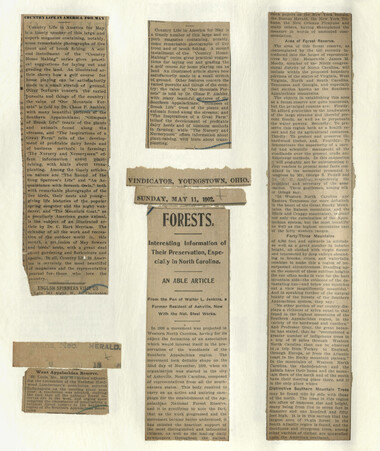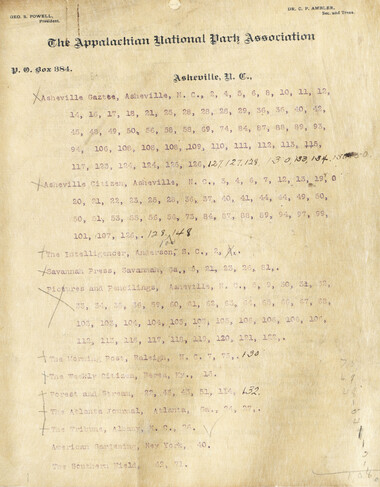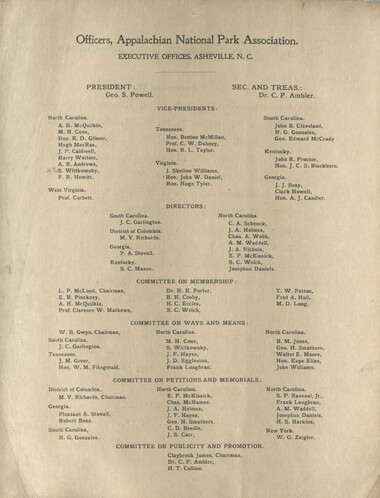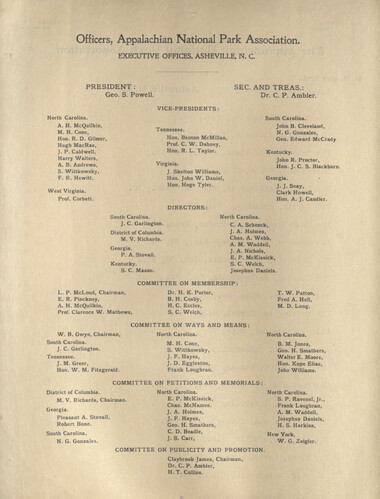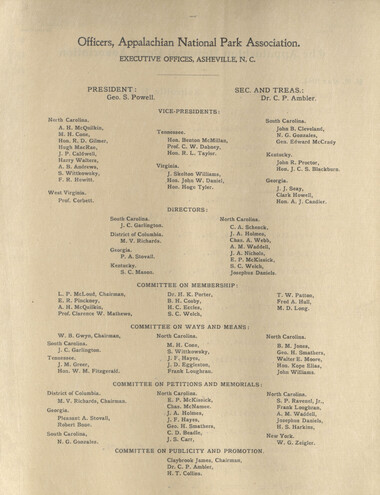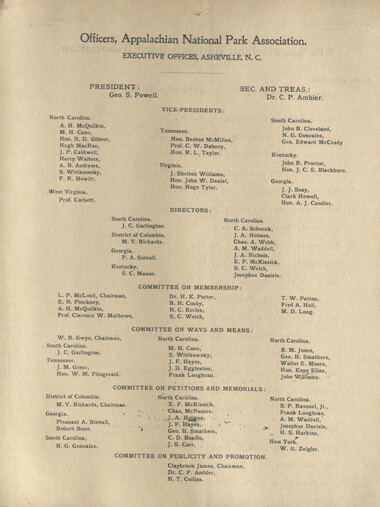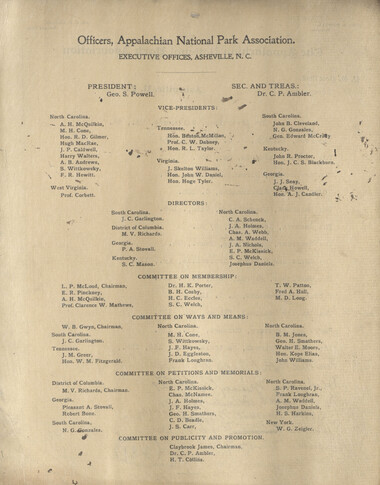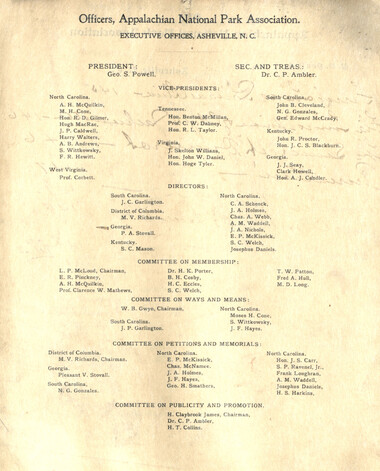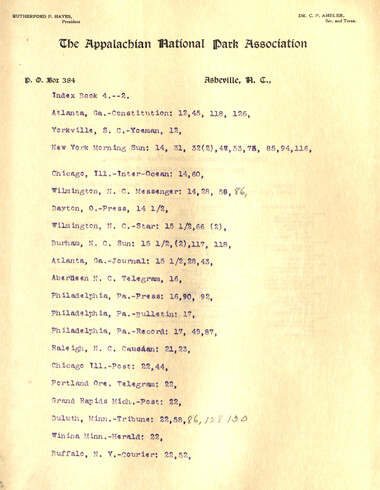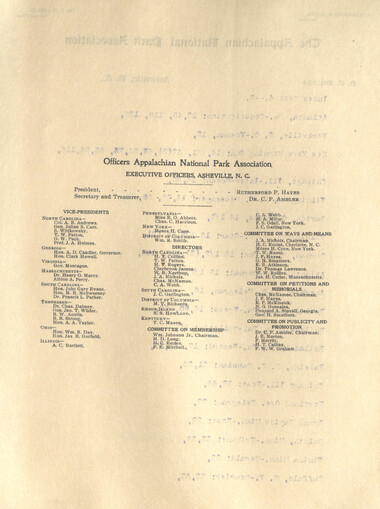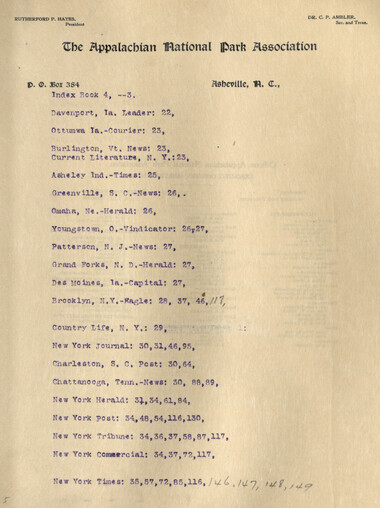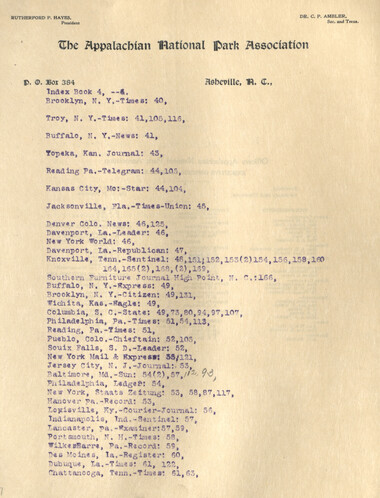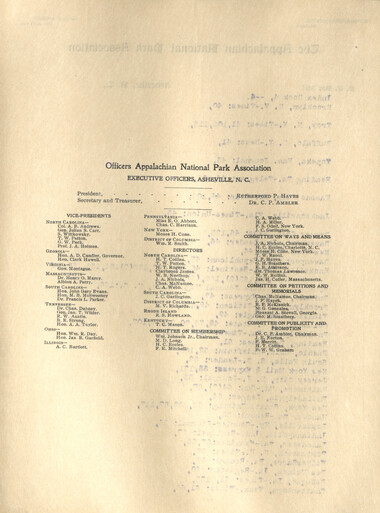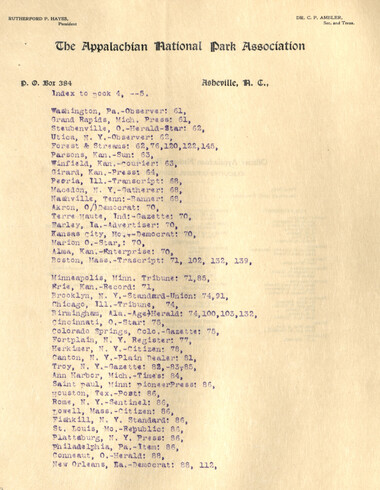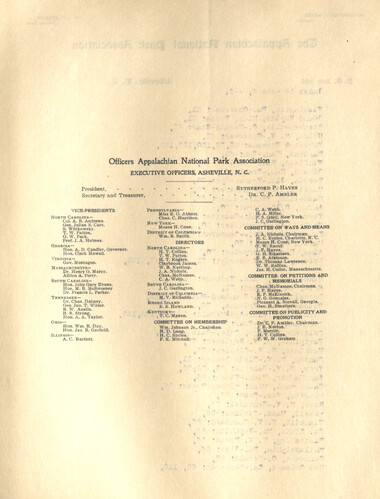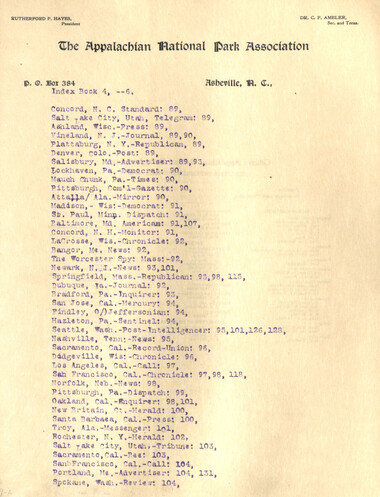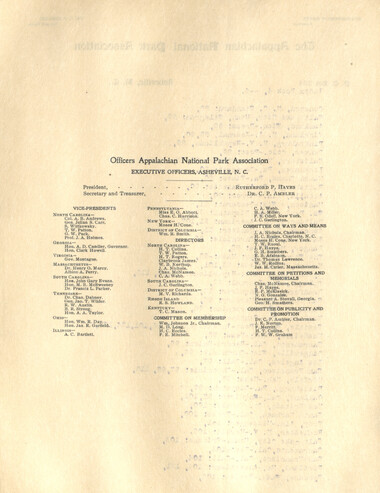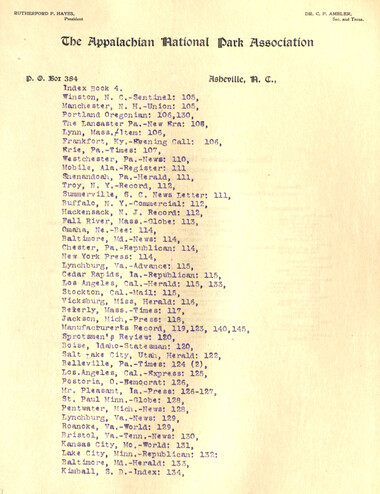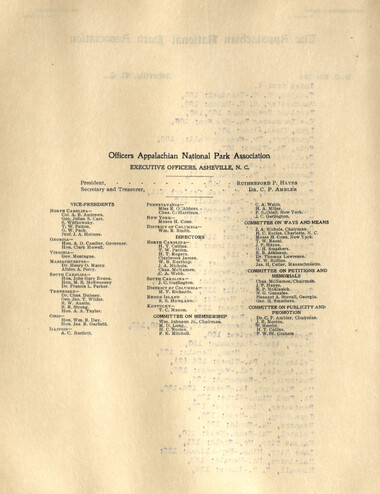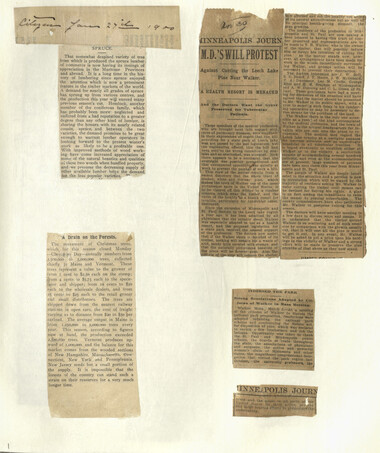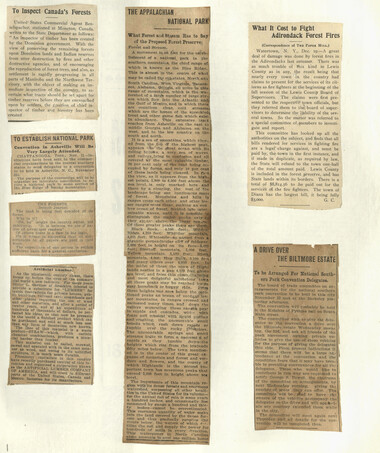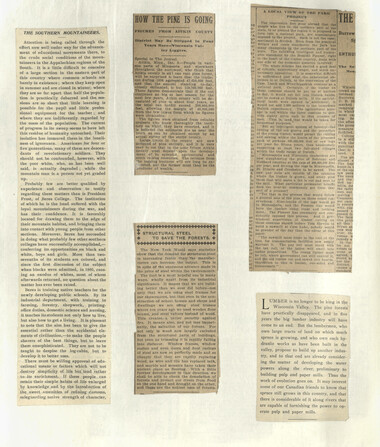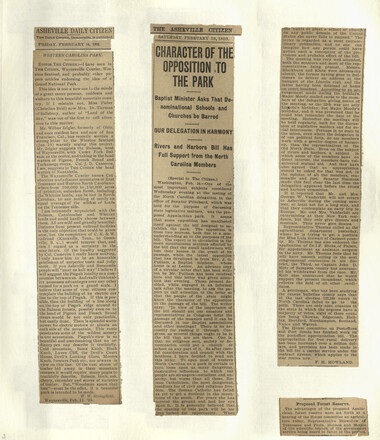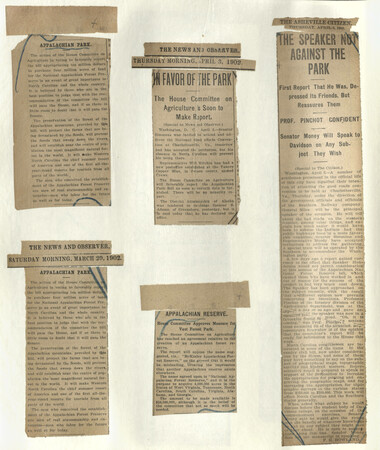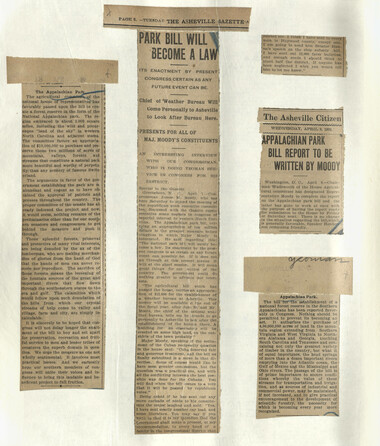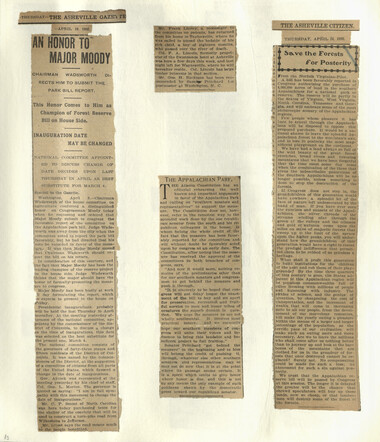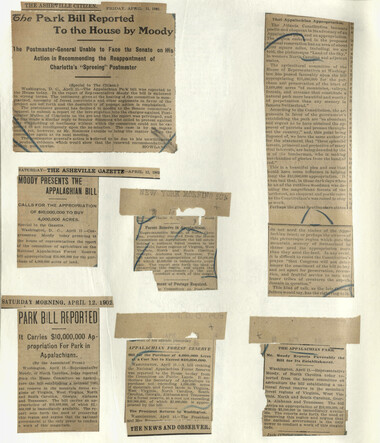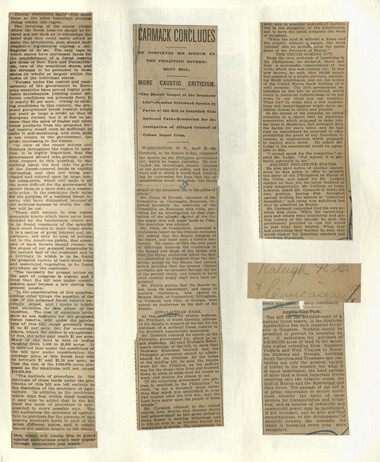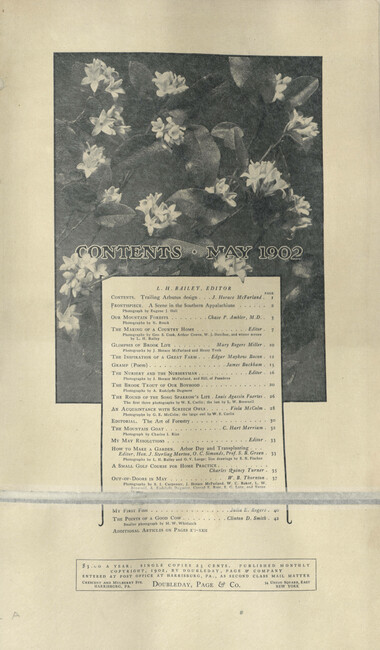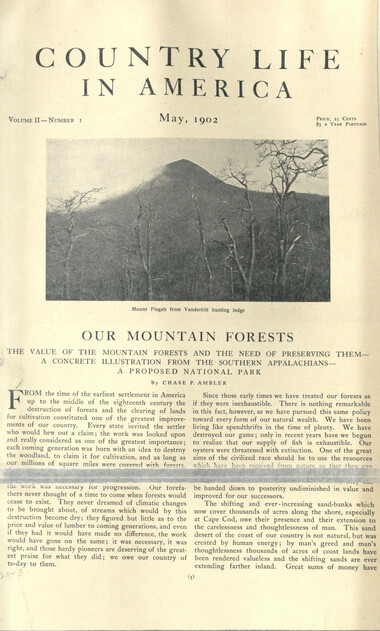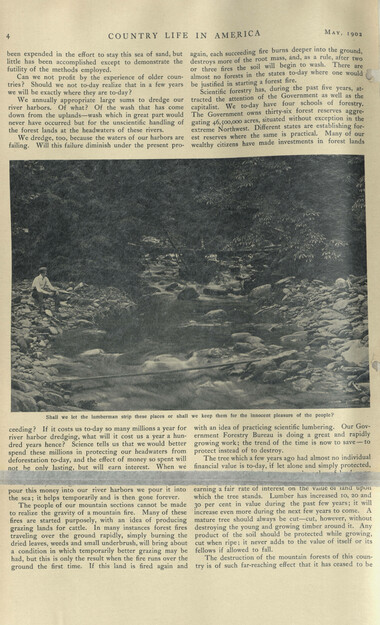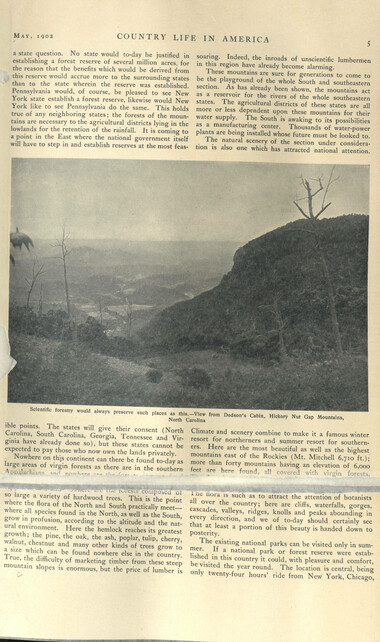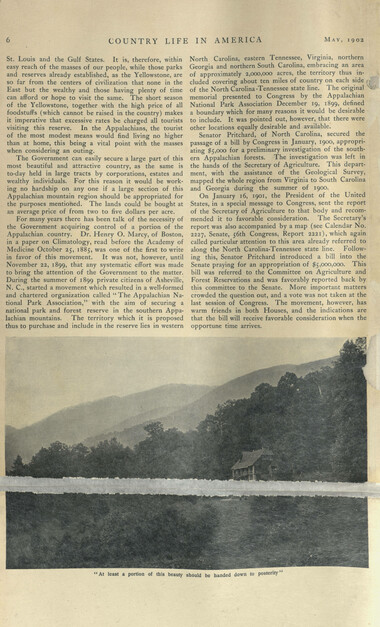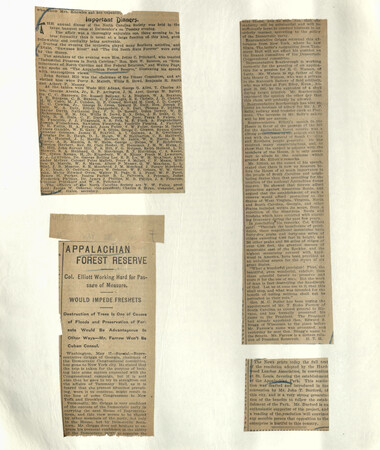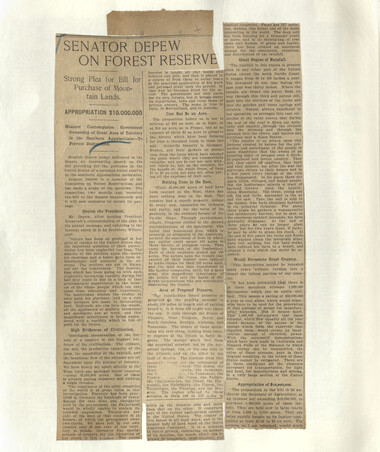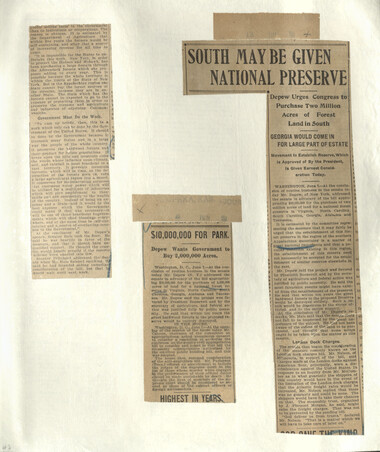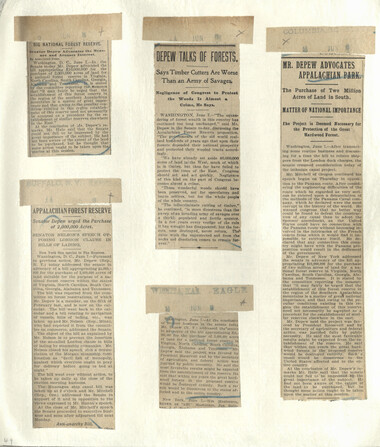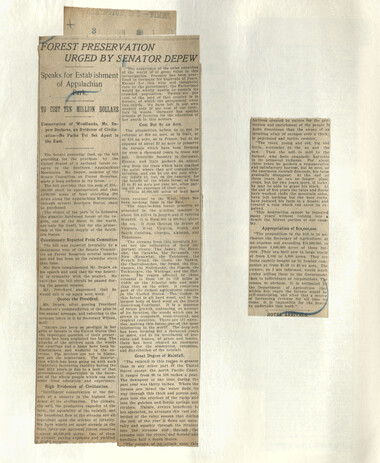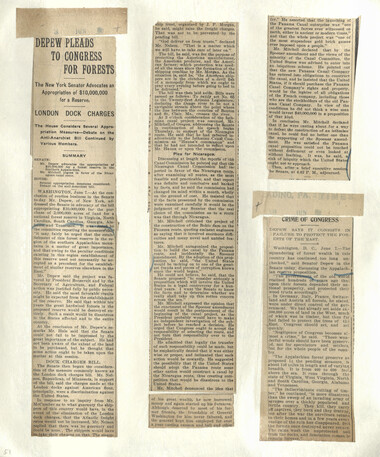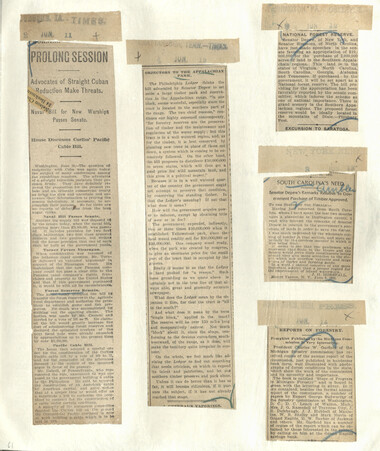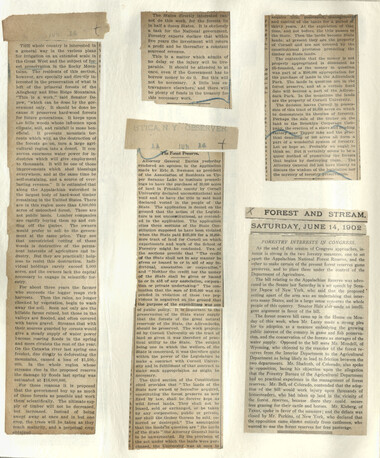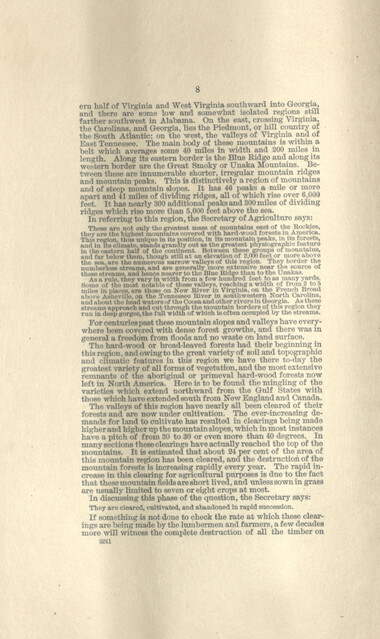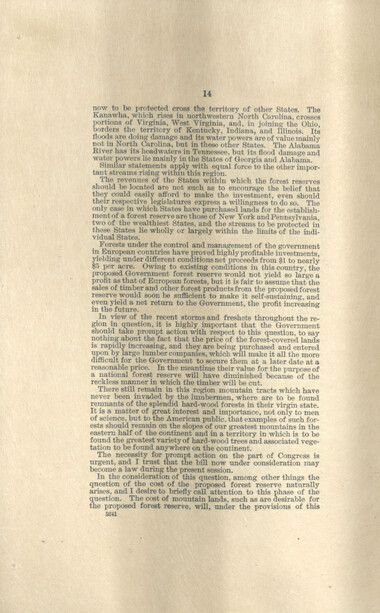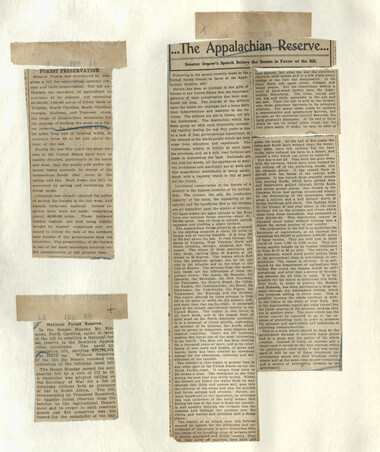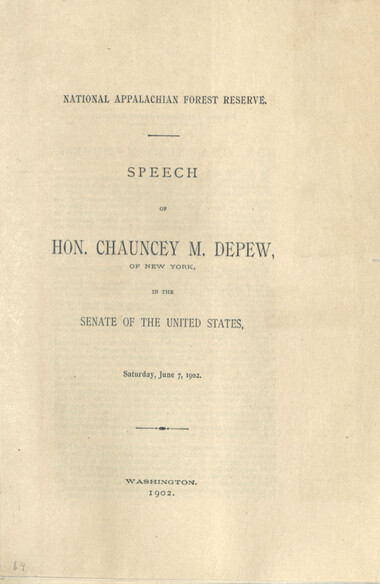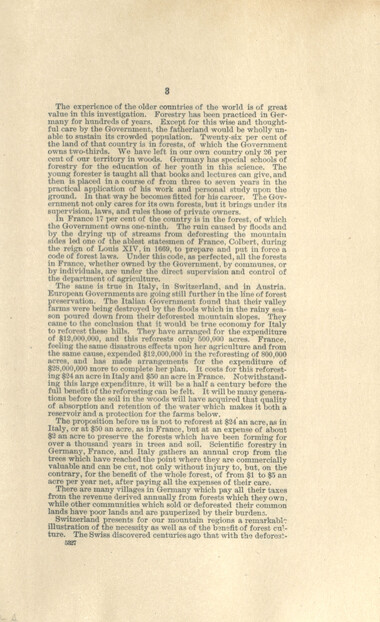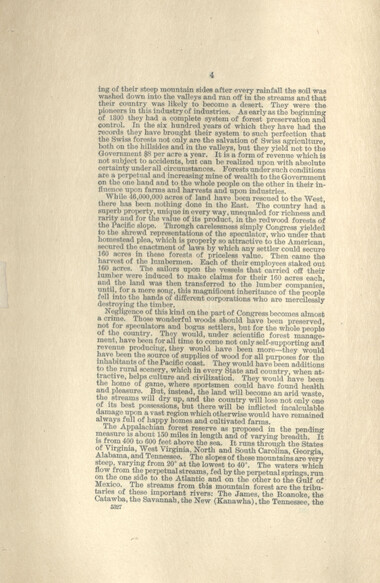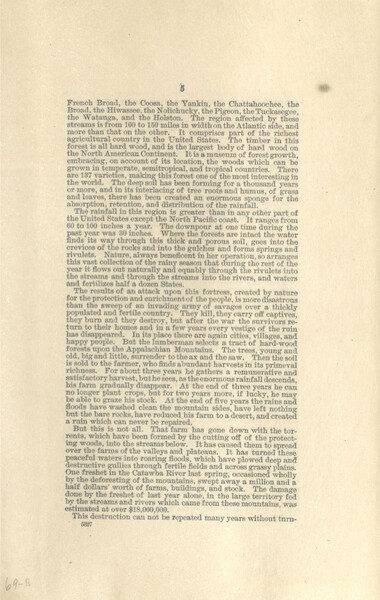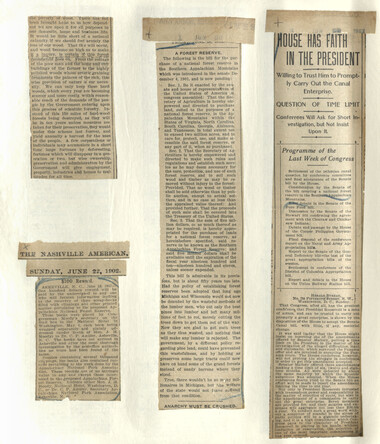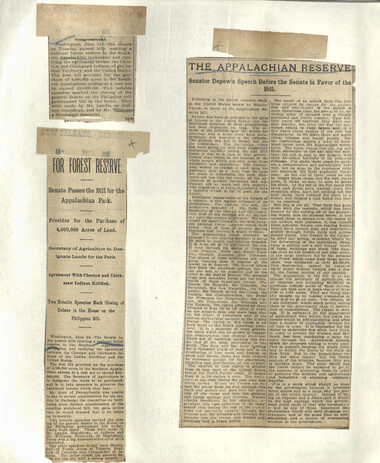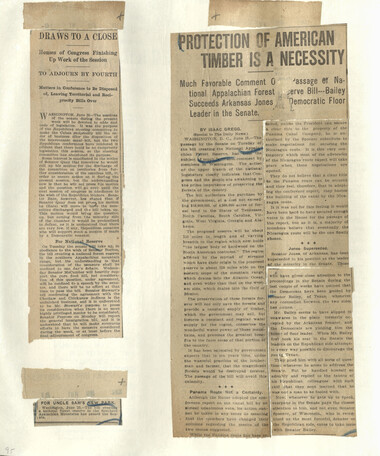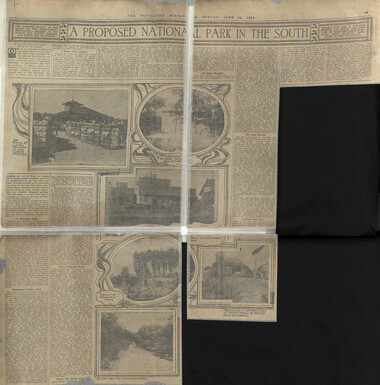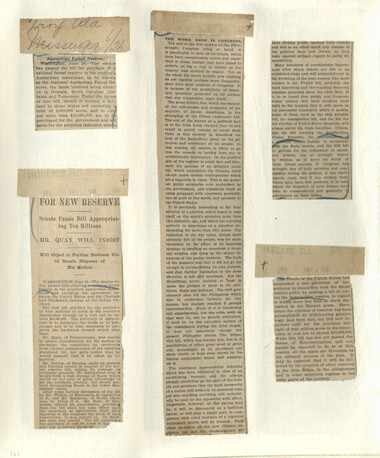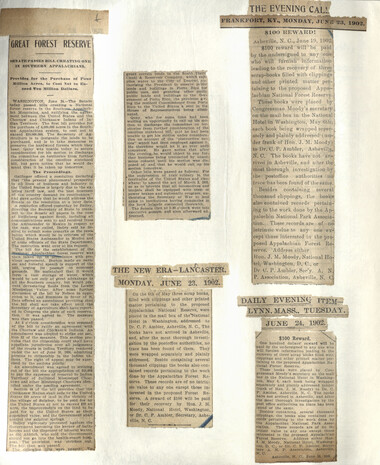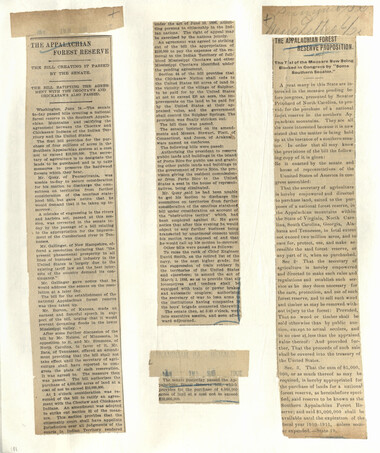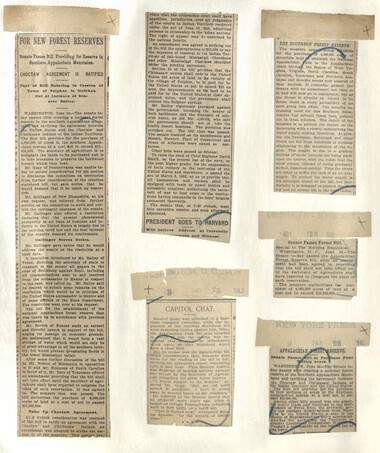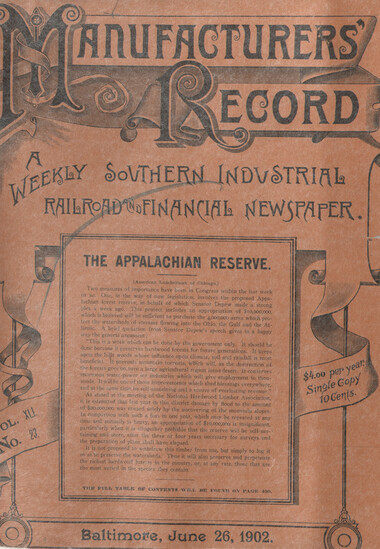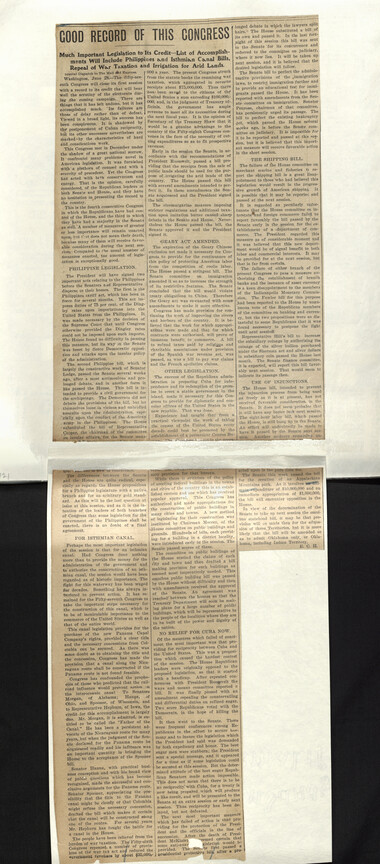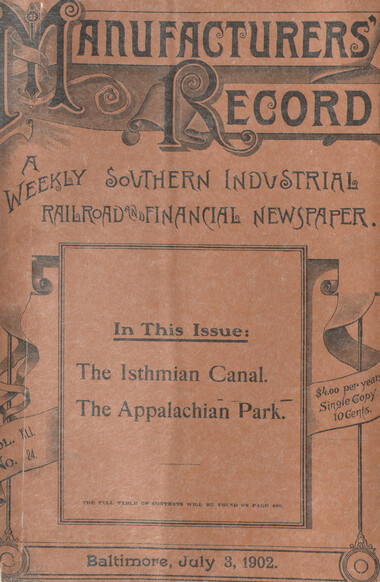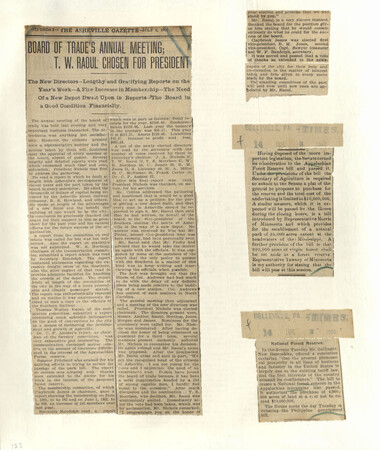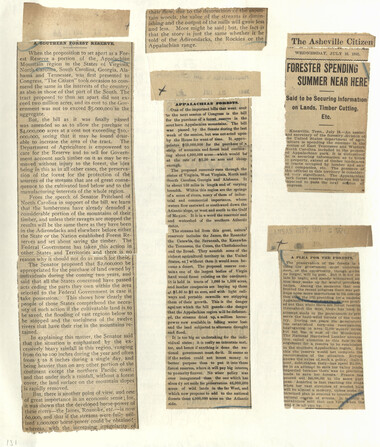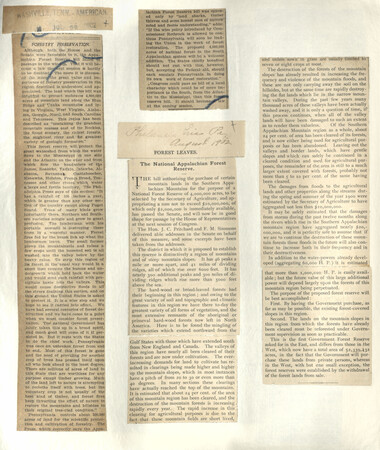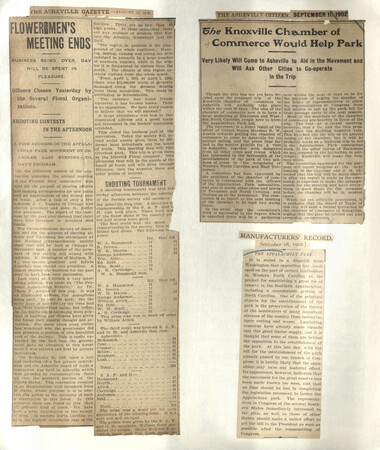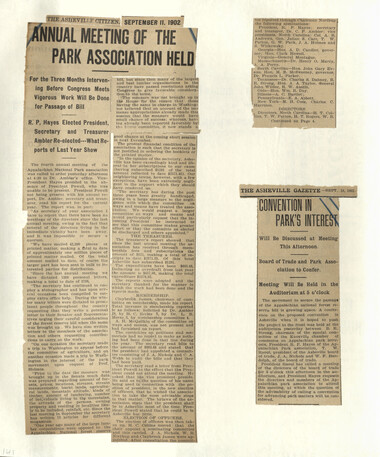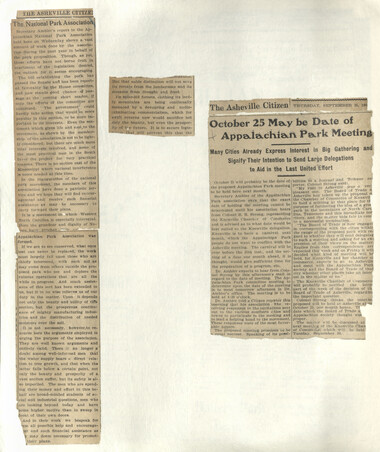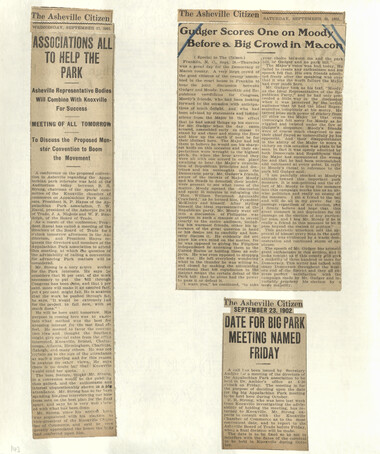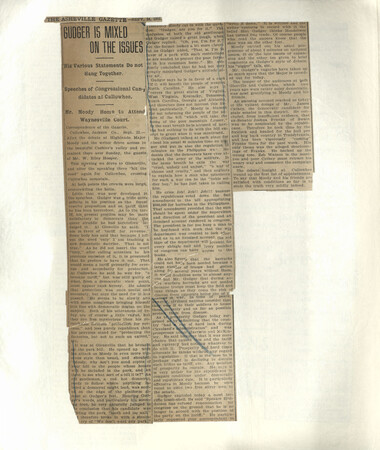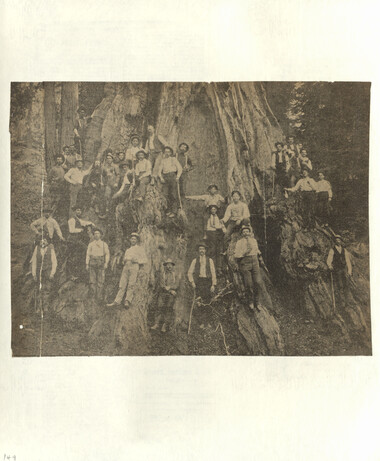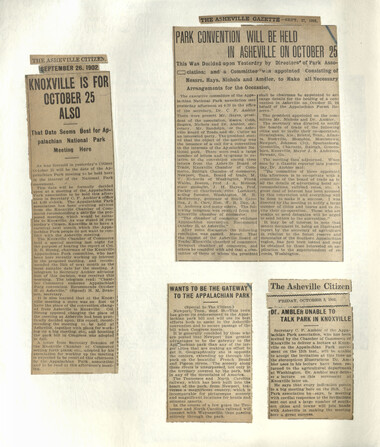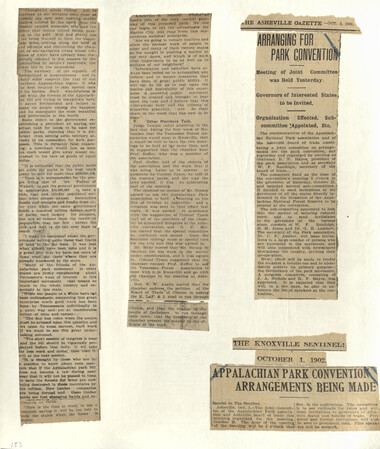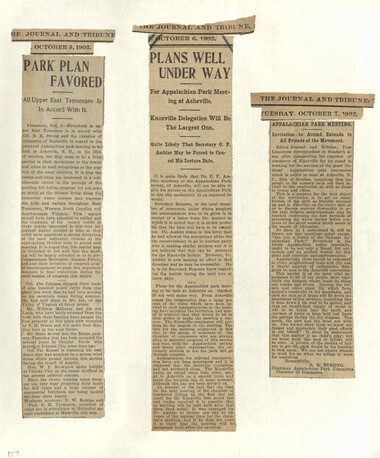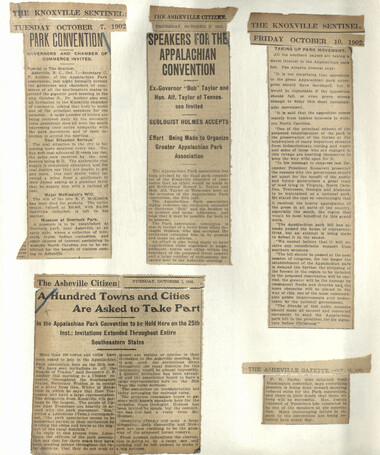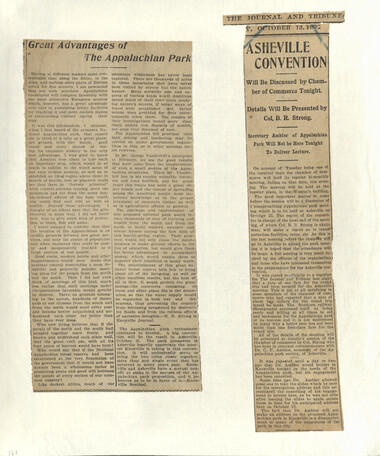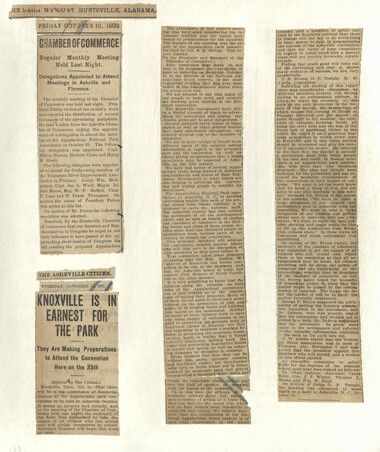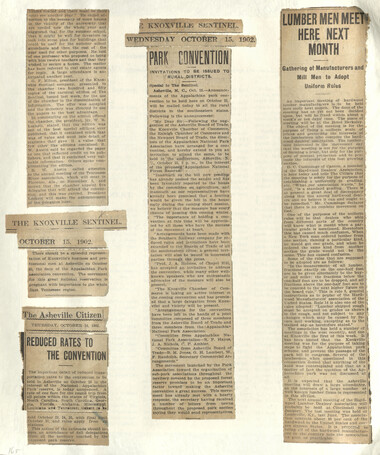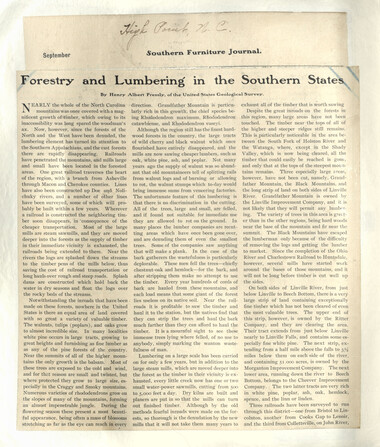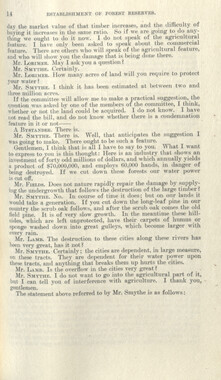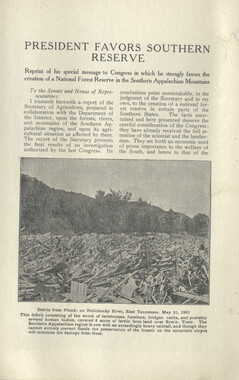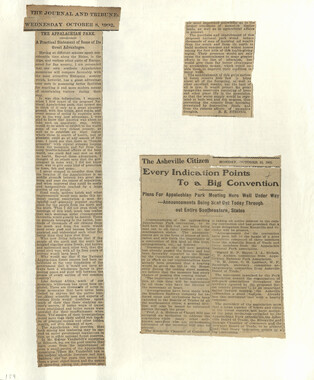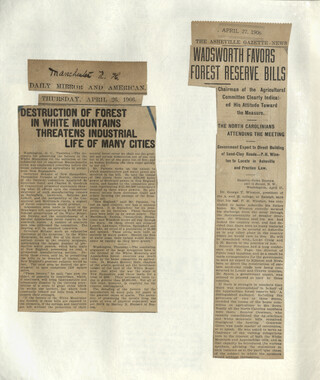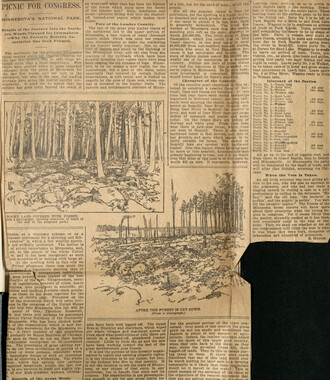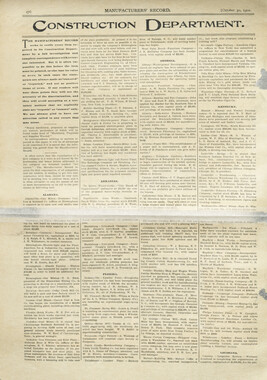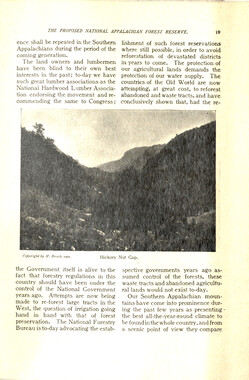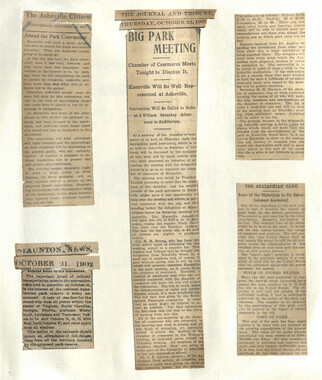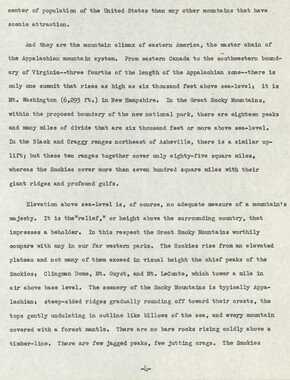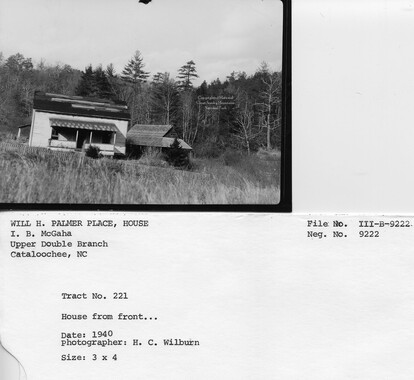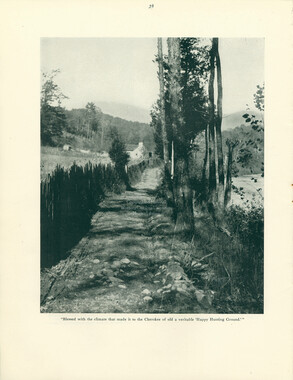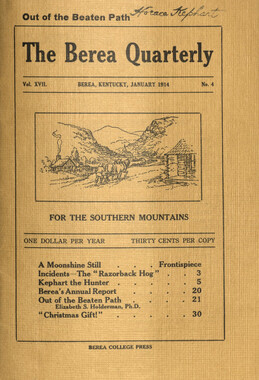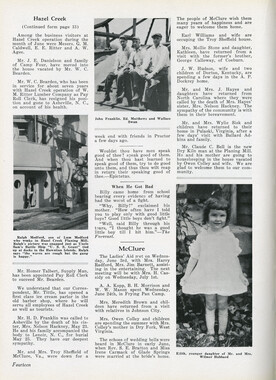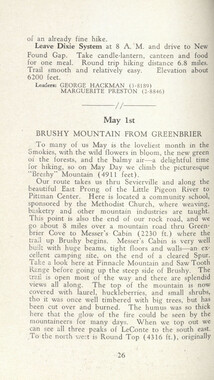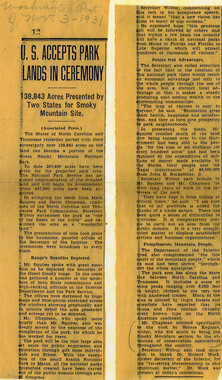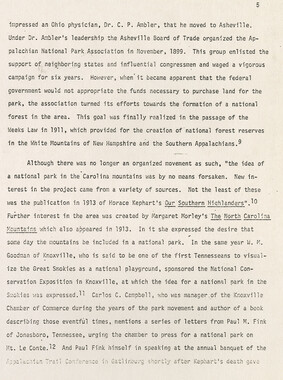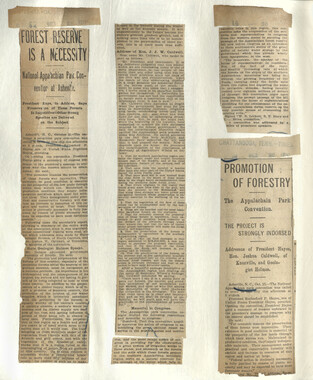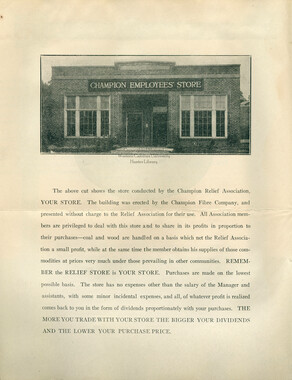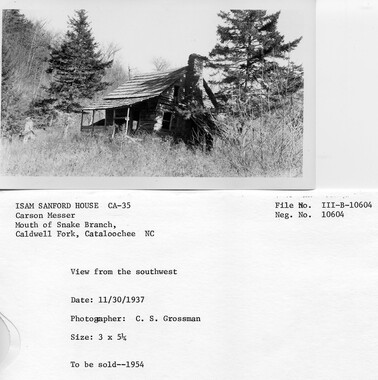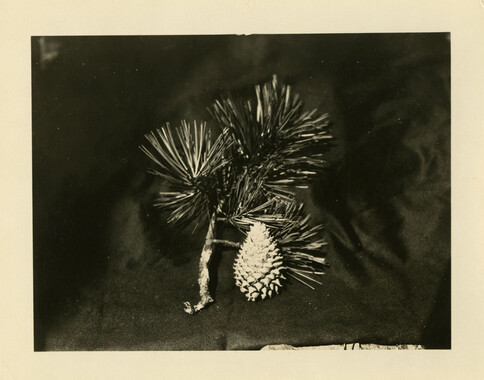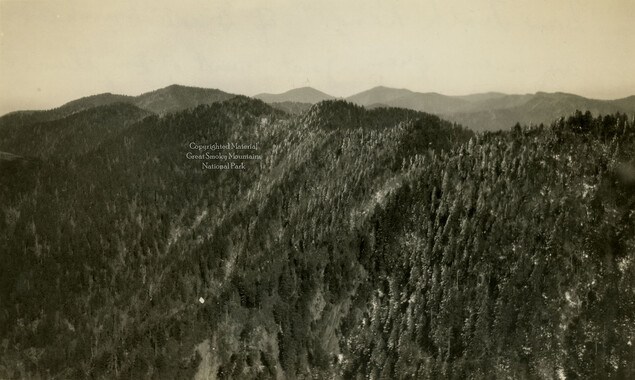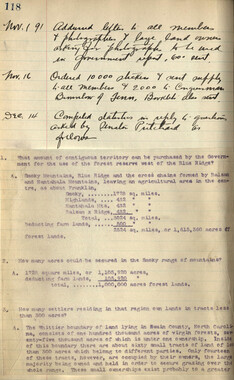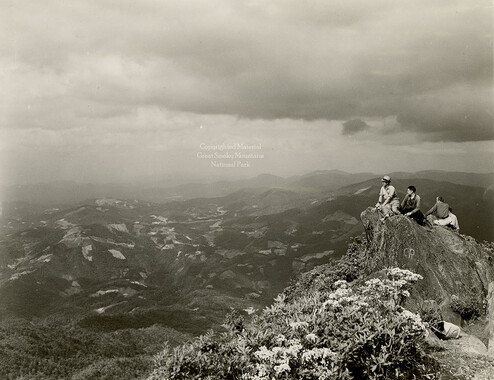Western Carolina University (21)
View all
- Canton Champion Fibre Company (2308)
- Cherokee Traditions (291)
- Civil War in Southern Appalachia (165)
- Craft Revival (1942)
- George Masa Collection (135)
- Great Smoky Mountains - A Park for America (2901)
- Highlights from Western Carolina University (422)
- Horace Kephart (941)
- Journeys Through Jackson (159)
- LGBTQIA+ Archive of Jackson County (85)
- Oral Histories of Western North Carolina (314)
- Picturing Appalachia (6798)
- Stories of Mountain Folk (413)
- Travel Western North Carolina (153)
- Western Carolina University Fine Art Museum Vitreograph Collection (129)
- Western Carolina University Herbarium (92)
- Western Carolina University: Making Memories (738)
- Western Carolina University Publications (2491)
- Western Carolina University Restricted Electronic Theses and Dissertations (146)
- Western North Carolina Regional Maps (71)
- World War II in Southern Appalachia (131)
University of North Carolina Asheville (6)
View all
- Allanstand Cottage Industries (62)
- Appalachian National Park Association (53)
- Bennett, Kelly, 1890-1974 (1463)
- Berry, Walter (76)
- Brasstown Carvers (40)
- Carver, George Washington, 1864?-1943 (26)
- Cathey, Joseph, 1803-1874 (1)
- Champion Fibre Company (233)
- Champion Paper and Fibre Company (297)
- Cherokee Indian Fair Association (16)
- Cherokee Language Program (22)
- Crowe, Amanda (40)
- Edmonston, Thomas Benton, 1842-1907 (7)
- Ensley, A. L. (Abraham Lincoln), 1865-1948 (275)
- Fromer, Irving Rhodes, 1913-1994 (70)
- George Butz (BFS 1907) (46)
- Goodrich, Frances Louisa (120)
- Grant, George Alexander, 1891-1964 (96)
- Heard, Marian Gladys (60)
- Kephart, Calvin, 1883-1969 (15)
- Kephart, Horace, 1862-1931 (313)
- Kephart, Laura, 1862-1954 (39)
- Laney, Gideon Thomas, 1889-1976 (439)
- Masa, George, 1881-1933 (61)
- McElhinney, William Julian, 1896-1953 (44)
- Niggli, Josephina, 1910-1983 (10)
- North Carolina Park Commission (105)
- Osborne, Kezia Stradley (9)
- Owens, Samuel Robert, 1918-1995 (11)
- Penland Weavers and Potters (36)
- Roberts, Vivienne (15)
- Roth, Albert, 1890-1974 (142)
- Schenck, Carl Alwin, 1868-1955 (1)
- Sherrill's Photography Studio (2565)
- Southern Highland Handicraft Guild (127)
- Southern Highlanders, Inc. (71)
- Stalcup, Jesse Bryson (46)
- Stearns, I. K. (213)
- Thompson, James Edward, 1880-1976 (226)
- United States. Indian Arts and Crafts Board (130)
- USFS (683)
- Vance, Zebulon Baird, 1830-1894 (1)
- Weaver, Zebulon, 1872-1948 (58)
- Western Carolina College (230)
- Western Carolina Teachers College (282)
- Western Carolina University (2008)
- Western Carolina University. Mountain Heritage Center (18)
- Whitman, Walt, 1819-1892 (10)
- Wilburn, Hiram Coleman, 1880-1967 (73)
- Williams, Isadora (3)
- Cain, Doreyl Ammons (0)
- Crittenden, Lorraine (0)
- Rhodes, Judy (0)
- Smith, Edward Clark (0)
- Appalachian Region, Southern (2693)
- Asheville (N.C.) (1936)
- Avery County (N.C.) (26)
- Blount County (Tenn.) (195)
- Buncombe County (N.C.) (1672)
- Cherokee County (N.C.) (283)
- Clay County (N.C.) (556)
- Graham County (N.C.) (236)
- Great Smoky Mountains National Park (N.C. and Tenn.) (519)
- Haywood County (N.C.) (3569)
- Henderson County (N.C.) (70)
- Jackson County (N.C.) (4913)
- Knox County (Tenn.) (35)
- Knoxville (Tenn.) (13)
- Lake Santeetlah (N.C.) (10)
- Macon County (N.C.) (420)
- Madison County (N.C.) (215)
- McDowell County (N.C.) (39)
- Mitchell County (N.C.) (132)
- Polk County (N.C.) (35)
- Qualla Boundary (982)
- Rutherford County (N.C.) (76)
- Swain County (N.C.) (2182)
- Transylvania County (N.C.) (270)
- Watauga County (N.C.) (12)
- Waynesville (N.C.) (86)
- Yancey County (N.C.) (72)
- Aerial Photographs (3)
- Aerial Views (60)
- Albums (books) (4)
- Articles (1)
- Artifacts (object Genre) (228)
- Bibliographies (1)
- Biography (general Genre) (2)
- Cards (information Artifacts) (38)
- Clippings (information Artifacts) (191)
- Copybooks (instructional Materials) (3)
- Crafts (art Genres) (622)
- Depictions (visual Works) (21)
- Design Drawings (1)
- Drawings (visual Works) (185)
- Envelopes (73)
- Exhibitions (events) (1)
- Facsimiles (reproductions) (1)
- Fiction (general Genre) (4)
- Financial Records (12)
- Fliers (printed Matter) (67)
- Glass Plate Negatives (381)
- Guidebooks (2)
- Internegatives (10)
- Interviews (815)
- Land Surveys (102)
- Letters (correspondence) (1013)
- Manuscripts (documents) (618)
- Maps (documents) (177)
- Memorandums (25)
- Minutes (administrative Records) (59)
- Negatives (photographs) (6090)
- Newsletters (1290)
- Newspapers (2)
- Notebooks (8)
- Occupation Currency (1)
- Paintings (visual Works) (1)
- Pen And Ink Drawings (1)
- Periodicals (193)
- Personal Narratives (10)
- Photographs (12976)
- Plans (maps) (1)
- Poetry (5)
- Portraits (4568)
- Postcards (329)
- Programs (documents) (181)
- Publications (documents) (2443)
- Questionnaires (65)
- Relief Prints (26)
- Sayings (literary Genre) (1)
- Scrapbooks (282)
- Sheet Music (2)
- Slides (photographs) (402)
- Songs (musical Compositions) (2)
- Sound Recordings (796)
- Specimens (92)
- Speeches (documents) (18)
- Tintypes (photographs) (8)
- Transcripts (322)
- Video Recordings (physical Artifacts) (23)
- Text Messages (0)
- A.L. Ensley Collection (275)
- Appalachian Industrial School Records (7)
- Appalachian National Park Association Records (336)
- Axley-Meroney Collection (2)
- Bayard Wootten Photograph Collection (20)
- Bethel Rural Community Organization Collection (7)
- Blumer Collection (5)
- C.W. Slagle Collection (20)
- Canton Area Historical Museum (2110)
- Carlos C. Campbell Collection (462)
- Cataloochee History Project (64)
- Cherokee Studies Collection (4)
- Daisy Dame Photograph Album (5)
- Daniel Boone VI Collection (1)
- Doris Ulmann Photograph Collection (112)
- Elizabeth H. Lasley Collection (1)
- Elizabeth Woolworth Szold Fleharty Collection (4)
- Frank Fry Collection (95)
- George Masa Collection (173)
- Gideon Laney Collection (452)
- Hazel Scarborough Collection (2)
- Hiram C. Wilburn Papers (28)
- Historic Photographs Collection (236)
- Horace Kephart Collection (861)
- Humbard Collection (33)
- Hunter and Weaver Families Collection (1)
- I. D. Blumenthal Collection (4)
- Isadora Williams Collection (4)
- Jesse Bryson Stalcup Collection (47)
- Jim Thompson Collection (224)
- John B. Battle Collection (7)
- John C. Campbell Folk School Records (80)
- John Parris Collection (6)
- Judaculla Rock project (2)
- Kelly Bennett Collection (1482)
- Love Family Papers (11)
- Major Wiley Parris Civil War Letters (3)
- Map Collection (12)
- McFee-Misemer Civil War Letters (34)
- Mountain Heritage Center Collection (4)
- Norburn - Robertson - Thomson Families Collection (44)
- Pauline Hood Collection (7)
- Pre-Guild Collection (2)
- Qualla Arts and Crafts Mutual Collection (12)
- R.A. Romanes Collection (681)
- Rosser H. Taylor Collection (1)
- Samuel Robert Owens Collection (94)
- Sara Madison Collection (144)
- Sherrill Studio Photo Collection (2558)
- Smoky Mountains Hiking Club Collection (616)
- Stories of Mountain Folk - Radio Programs (374)
- The Reporter, Western Carolina University (510)
- Venoy and Elizabeth Reed Collection (16)
- WCU Gender and Sexuality Oral History Project (32)
- WCU Mountain Heritage Center Oral Histories (25)
- WCU Oral History Collection - Mountain People, Mountain Lives (71)
- WCU Students Newspapers Collection (1923)
- Western North Carolina Tomorrow Black Oral History Project (69)
- William Williams Stringfield Collection (2)
- Zebulon Weaver Collection (109)
- African Americans (390)
- Appalachian Trail (35)
- Artisans (521)
- Cherokee art (84)
- Cherokee artists -- North Carolina (10)
- Cherokee language (21)
- Cherokee pottery (101)
- Cherokee women (208)
- Church buildings (190)
- Civilian Conservation Corps (U.S.) (111)
- College student newspapers and periodicals (2012)
- Dams (107)
- Dance (1023)
- Education (222)
- Floods (61)
- Folk music (1015)
- Forced removal, 1813-1903 (2)
- Forest conservation (220)
- Forests and forestry (1195)
- Gender nonconformity (4)
- Great Smoky Mountains National Park (N.C. and Tenn.) (181)
- Hunting (45)
- Landscape photography (25)
- Logging (119)
- Maps (83)
- Mines and mineral resources (8)
- North Carolina -- Maps (18)
- Paper industry (38)
- Postcards (255)
- Pottery (135)
- Railroad trains (72)
- Rural electrification -- North Carolina, Western (3)
- School integration -- Southern States (2)
- Segregation -- North Carolina, Western (5)
- Slavery (5)
- Sports (452)
- Storytelling (243)
- Waterfalls -- Great Smoky Mountains (N.C. and Tenn.) (66)
- Weaving -- Appalachian Region, Southern (280)
- Wood-carving -- Appalachian Region, Southern (328)
- World War, 1939-1945 (173)
Appalachian National Park Association Newspaper Clippings, 1899-1902
Item
Item’s are ‘child’ level descriptions to ‘parent’ objects, (e.g. one page of a whole book).
-
-
c»i:ntky life in America for may Country Life in America for May is a timely number of this large and superb magazine containing, notably, some remarkable photographs of live LI trout and of brook fishing-. A sec- I oiul installment of the "Country Home Making" series gives practical suggestions for laying out and grading the land. An illustrated article shows how a golf course for home playing can be satisfactorily made in a small stretch of ground. Other features, concern the varied Jjursuits and things of the country; the value of "Our Mountain Forests" is told by Dr. Chase P. Ambler, with many beautiful pictures of tbe Southern Appalachians; "Glimpses of Brook Life" treats of the plants and animals found along the streams, and "Tbe Inspirations of a tireat Farm" tells of ibe development of profitable dairy herds and of business methods in farming; 'The Nursery and Nurserymen" offers information about pliuil- raising, with hints about transplanting. Among the timely articles on nature are --The Round of the Song Sparrow's Life" and "An Acquaintance with Screech Owls," both with remarkable photographs of the live birds, their nests and young— giving life histories of the populnr spring songster and the night wanderer; and "The Mountain Goat," as a peculiarly American game animal, is the subject of an illustrated article by l>r. C. Hart Merriam. The Calendar of all the work and reerea- tion of the outdoor world is, this month, a prolusion of May flowers a ml birds' nests, with a great deal about gardening anil floriculture arid sports. In all. Country Lif_ iii America is certainly tin- most beautiful lot magazines and the representative [journal for those who love the country. ENGLSH SPINNERS VlSWfs"* • l.ate lat nisrht VV. .l/'Thackstori ant Appalachian Reserve. St. Louis, Mo., May 17.—Before adjourning the convention of the National Hardwood Lumbermen's i selected Indianapolis as the meeting place next A resolution was adopted, reciting the fact that all the national forest re- arc in the west, and urging upon congress the importance of establishing a .al forest reserve in the hard-ninmii .1 of tbe Southern Appalacjtimnnoun- Country Life in America for May is a timely number of this large and superb magazine containing, notably, some remarkable photographs ot" live trout and of brook fishing. A second installment of the "Country Home- Making" series gives practical suggestions for laying out and grading the a golf course for horne playing can ue land An illustrated article shows how satisfactorily made in a small stretch of ground. Other features concern the varied pursuits and things of the country; t'he value of "Our Mountain Forests" is told by Dr. Chase P. Ambler, with many beautiful -njcturfts of |frh/t Southern Appalachians; ''Wimps'esof Brook Life" trees of the plants and animals found along the streams; and "The Inspirations of a Great Farm" tellsoi' the develoument of profitable dairy herds and of business methods in farming: whale "The Nursery and ymen" offers information about plant-raising, with hints about transplanting. ■ VINDICATOR, YOUNGSTOWN,JOHIO. SUNDAY, MAY 11, 1902. 7~ Inte FORESTS. resting Information of Their Preservation, Espe- ctal.y In North Carolina. AN ABLE ARTICLE rrom the Pen of Walter L. Jenkins, a Former Resident of Ashville, Now With the Nat. Steel Works. In 1898 a movement was projected in Western North Carolina, having for its object the formation of an association which would interest Itself In the preservation of the woodlands of the Southern Appalachian region. The movement took definite shape on the 22nd day of November, 1899, when an organization was started in the city of Asheville, North Carolina, composed of representatives from all the south- eastern states. This body resolved to j carry on an active and untiring cam- , paign for the establishment of the Ap- j palachian National Forest Reserve, and it is gratifying to note the fact, that as the work progressed and the i movement became better understood, it has enlisted the heartiest support of the most distinguished and influential citizens, as well as the leading daily \ spapers throughout the nation. I i-h papers as the New York Herald, the Boston Herald, the New York Tribune, the New Orleans Picayune and many others, having Championed the measure in words of unstinted commendation. Area of Forest Reserve. The area of this forest reserve, as contemplated by the bill recently Introduced into the house of representatives by the Honorable James M. Moody, member of the Ninth congressional district of North Carolina, will include within the proposed boundary portions of the states of Virginia, West Virginia, North and South Carolina, Tennessee and Georgia, and especially that section known as the Southern Appalachian mountains. The objects in establishing this area as a forest reserve are quite numerous, but the principal reasons are: Firstly: To afford protection to the headwaters of the large streams and thereby prevent floods, as well as to perpetuate the water powers. Secondly: To preserve this region both as a health resort and for its agricultural resources. Thirdly: TO protect and preserve the hardwood timber, and, Fourthly: To lerr.onstrate the superiority of a careful and scientific manageent of the woodlands over the present crude am istrous methods. In this connection it will probably not be uninteresting U ir readers to present some facts con- i '.allied in the memorial presented tc jongress by Mr. George S. Powell and velj the dent and secretary of the ■la i ion. These gentlemen, among oth ?.r things say: "In Western North Carolina and Eastern Tennessee (or mine definite!} 11 the lie.-ui ni: the l In ■ '•.> Moun tains, the Balsom mountains, and the Black and Craggy mountal . I, Is found not only the culmination of the Appa- highett mount! east of the lofiy western rani ^^^~ Forty-Three Mountains Of 6,000 fe.-i and upwards In altitude as well as a great number In Inl height, all clothed with virgin fo and Intersected by deep \-':i . t abounding in brooks, rivers, and rfalls, combine to make this a region of unsurpassed attra Standing upon the summit of these sublime heights the eye often seeks In vain for the bare ntain side—the evidence of the devastating axe—and below one stretches out a view magnificently meautiful." And in speaking further of the natural beauty of the forests of the Southern Appalachian system, they say: "No other portion of our country displays a richness of sylva equal to that found in the highest mountains of the Southern Appalachian region, in the variety of its hardwood and conifers." And Professor Gray, the great botanist has stated, that, he "encountered a greater number of indigenous trees In a trip of 30 miles through Western North Carolina than can be observed in.a trip from Turkey to England, through Europe, or from the Atlantic coast to the Rocky mountain plateau." In the mountains of Western North Carolina, the rhododendron and the kalmia have their home and the mountain flora of the north and of the south have their meeting place there, and it' is the only place where Distinctive Southern Mountain Trees may be found side by side with those of the north. The trees in this region are often of immense size and height, many being from five to seven feet in diameter and one hundred and fifty- feet high. It is in this section that the largest area of virgin forest in the South Atlantic region is found, and the deciduous and evergreen trees, among other varities of timber, are unexcelled I | upon the American continent. I
Object
Object’s are ‘parent’ level descriptions to ‘children’ items, (e.g. a book with pages).
-
This is one of two notebooks assembled by the Appalachian National Park Association that includes documents and news clipping about the organization. The Appalachian National Park Association was formed in 1899 for the purpose of promoting the idea of a national park in the eastern U.S. Although housed in Asheville, North Carolina, the organization was a multi-state effort, attracting representatives from seven southern states. One of the highlights of the group’s activities was a convention held in 1902 to which 1,500 people attended. The association lobbied Congress for the creation of a park, but with limited success. The association disbanded in 1905.
-
